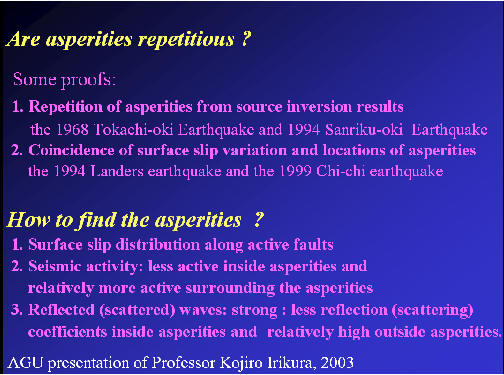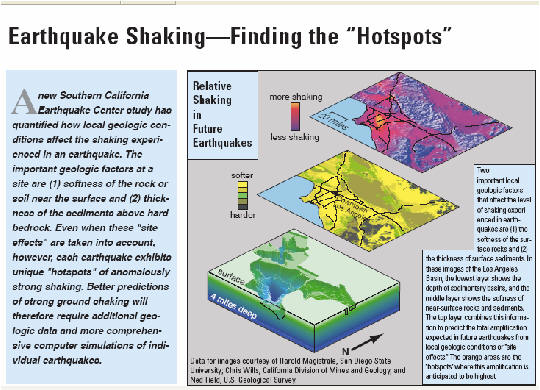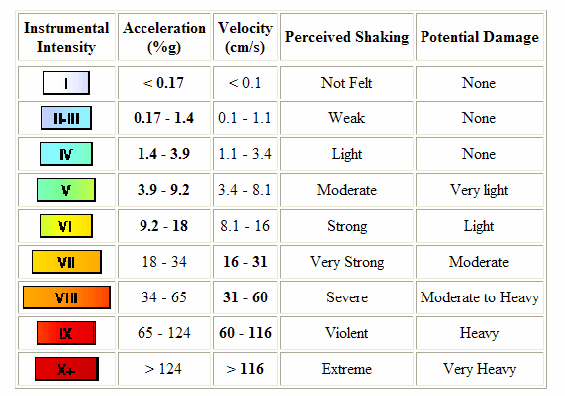|
Is there any
difference other than weakness of surface waves between nuclear tests and
Earthquakes? If the Nuclear test is done on the ground (surface), will it
produce surface wave?
Beyond dramatic decrease in changes in amplitude of surface waves compared to
surface wave of one earthquake, two other things should be considered as:
Depth:
Nuclear explosions have all been shallower than 2 km. Thus, a deep-seated event
(say 200 km) is unlikely to be a nuclear explosion, even assuming an error of
20-30 km for depth estimate.
Polarity:
The first P-wave from an explosion to arrive at any
seismic station, the polarity will be positive or up since radiation of seismic
wave due to nuclear explosion is compressional.
How can the
Surface Wave (in magnitude) be smaller than P-wave in the nuclear test?
It
is related to differences in radiation of seismic energy as compressional (bomb)
and shear. For example, earthquakes occur by shearing “slip along a fault”,
generating large amount of shear wave energy, which cause a larger surface
waves. But, explosions involve compressional motions which mean energy released
from center to outside, then shear waves are generated in lower size. In
summary, changes in size of shear waves are totally dependent upon types of
released energy.
Mining and
Induced Seismicity?
It
is a type of blasting based seismicity since blast is used to excavate mining
and released energy cause a shaking in the region or smaller earthquakes.
What are the uses
of Byerlee’s Law? Byerlle’s Law? I could not understand Byerlee’s Law for Rock
Friction?
Byerlee’s law is based on Laboratory results for sliding on existing faults of
various rock types find relation between normal stress on fault and
shear stress required for sliding. Those couple of former stress is needed
to infer effective stress as a function of depth. Please remember that
size in effective stress in space and time is main factor effecting seismicity
rate in Reservoir or Fault.
Rock
friction you mean Friction Coefficient “μ” is defined by a couple of above
stresses (Normal and Shear), which can be inferred through the Byerlee’s law.
If the oil or gas
extraction done in stable plate, will it cause a falling down ground?
I
think that you ask induced seismicity might cause a surface fault. For surface
rupture, the size for released energy should be reach a state of stress which
might cause an earthquake M=6. To my best knowledge, I could not see such kind
of larger event which was caused so far due to oil-extraction since maximum
observed magnitude was 4.3 as observed in Ekofisk Area in Norway or British
Columbia. Such magnitudes (4<M<6) are called intermediate seismicity which
might not cause a ground deformation.
How a seismic
station works?
It
may be better to visit to seismometer of ESD in Building 4. Thus, I suggest you
to visit below site:
http://www.iris.edu/edu/onepagers/Hi-Res/OnePager7.pdf
What does Rock
Burst Mean?
In
geology,
a rock burst is a spontaneous, violent fracture of
rock
that can occur in deep
mines.
The opening of a
mine shaft
relieves neighboring rocks of tremendous pressure, which can literally cause the
rock to
explode
as it attempts to re-establish equilibrium. Rock bursts are a serious hazard; in
South Africa,
they kill roughly 20 miners each year.(Monroe and Wicander, 96)
rock bursts
they are a result of seismic activities.They are generally defined as siesmic
events which cause damage to underground mine workings.They are due to brittle
fracturing of rock,causing it to collapse rapidly with violent expulsion of rock
that is aproximately 100/200 tonnes or more this is due to the release of energy
and it results in a decrease in the potential energy of the rock around the
excavation.Another explanation is that the changes brought about the mine due to
te redistribution of stress trigger latent seismic events that derive mainly
from the strain energy produced by the geological aspects in the state of the
stress.
Source:
http://www.answers.com/rock%20burst
You did not
mention the other things that trigger EQ like: Oil Extraction, Hot Water
Extraction, Wast Water Injection
Please remember that effect of either extraction or injection might be possible
cause for decreasing Effective Stress in Reservoir regardless the type of
material which is extracted gas or oil, injected fresh water or waste water
since Changes in Pore-Pressure makes a decrease in effecting normal stress which
enlarge effective stress of region.
Could you please
list these 5-D parameters?
Seismic Monitoring provide you a data of 5D as:
-
Spatial Dimension (3):
latitude X, longitude Y, depth z
-
Time Dimension (1):
Occurrence Time
-
Size Dimension (1):
Magnitude
|

![]()






